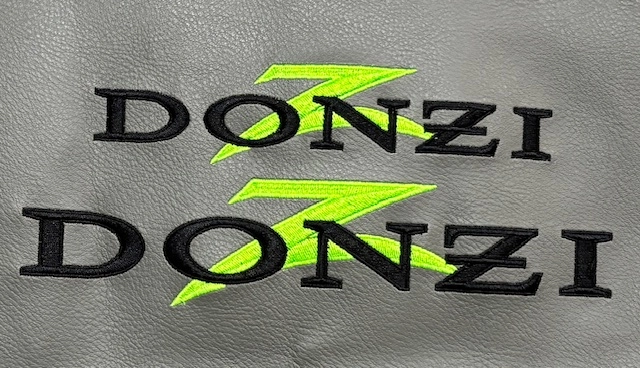Personalized School Uniforms with High-Quality Embroidery Providers
Personalized School Uniforms with High-Quality Embroidery Providers
Blog Article
The Art of Personalized Embroidery: Unlocking the Tricks to Creating Unique and Remarkable Styles
Needlework, a craft soaked in tradition and virtuosity, holds within its complex stitches the power to transform material right into a canvas of unique expression. The tricks to producing personalized needlework designs that mesmerize the eye and leave a long-term perception lie in a delicate balance of strategy, imagination, and attention to detail. As we explore the globe of custom embroidery, we uncover the nuanced interplay in between string option, stitch intricacy, and layout personalization that raises a plain garment to an artwork. Join us on a journey with the art of custom embroidery as we unwind the enigmas behind crafting absolutely unforgettable and distinctive creations.
Selecting the Right Embroidery Threads
When selecting needlework threads, what key aspects should you consider to guarantee the very best outcomes for your customized designs? The selection of embroidery thread is critical in figuring out the final result of your embroidered design. Among the main factors to consider is the product of the thread. Different products such as cotton, polyester, rayon, and silk supply varying levels of shine, durability, and appearance. It is important to select a string material that enhances the material you are stitching on and lines up with the preferred look of the design.
Thicker strings can add dimension and appearance to your style, while finer strings are optimal for complex information and little text. Additionally, taking into consideration the color fastness and washability of the thread is important to make certain that your personalized designs preserve their high quality and vibrancy over time.
Exploring Different Stitch Strategies
To explore the world of 'Discovering Different Stitch Techniques', one need to grasp the complexities and nuances that each stitching method gives the art of needlework. Various stitch methods not only include aesthetic rate of interest yet also add to the overall appearance and measurement of the style. One popular stitch strategy is the satin stitch, which entails very closely jam-packed parallel stitches to produce a smooth and shiny surface area, suitable for filling out forms and creating bold outlines.
On the various other hand, the backstitch is a flexible method typically utilized for outlining and including great details. It includes sewing in reverse to create a strong line of embroidery. Additionally, the French knot stitch includes a tactile element to styles, perfect for developing distinctive accents like blossom facilities or decorative touches.
Discovering different stitch methods permits embroiderers to have fun with light, shadow, and deepness within their designs, raising the visual allure and creative high quality of their needlework projects. By mastering numerous sewing approaches, one can open endless opportunities for developing special and remarkable custom-made embroidery pieces.
Incorporating Personalized Layout Components
Having checked out the details of different stitch strategies such as the satin stitch, backstitch, and French knot, the focus now shifts in the direction of incorporating personalized layout aspects in personalized needlework tasks. Individualized style aspects play a critical role in making embroidery projects absolutely distinct and remarkable. One method to integrate customization is by including initials, names, or significant days to the layout. This not just includes a tailored touch but also boosts the nostalgic value of the needlework item.
Another way to incorporate tailored design components is by consisting of icons or themes that hold special meaning to the recipient or reflect their rate of interests and personality. Including a favored blossom, animal, or hobby-related symbol can make the embroidery style more significant and individualized. Additionally, choosing colors that resonate see this with the recipient or align with the designated theme can even more boost the personalization of the needlework job.
Understanding the Art of Shade Coordination
One trick facet of color coordination is recognizing color theory. This includes knowing how various shades communicate with each other, the feelings they share, and how they can be incorporated to produce visually appealing designs. By using shade theory concepts, embroiderers can produce harmonious shade schemes that boost the overall appearance of the layout.
Additionally, focusing on contrast is vital in shade sychronisation. Utilizing contrasting colors can assist certain components of the layout pop, boost clarity, and produce an aesthetically vibrant embroidery piece. By grasping the art of shade sychronisation, embroiderers can raise their designs and develop memorable items that reverberate with clients and visitors alike.
Enhancing Appearance With Advanced Needlework Stitches

French knots, for instance, are excellent for adding small, elevated dots to your style, resembling the look of grains or developing a distinctive surface area. Bullion knots, on the other hand, can be utilized to create twisted, ropelike elements that include an elegant feeling to the embroidery. Seed sewing includes small, scattered stitches that can fill out areas with a multicolor appearance, while turkey work produces fluffy, dimensional accents Visit This Link reminiscent of animal fur or like this vegetation. Trying out these sophisticated embroidery stitches permits you to push the boundaries of conventional needlework and develop absolutely distinct and aesthetically attractive appearances in your designs.
Conclusion
Finally, the art of custom-made embroidery involves a mix of selecting the right threads, exploring various stitch techniques, integrating tailored design elements, understanding shade sychronisation, and enhancing appearance with innovative stitches. By recognizing and implementing these essential components, embroiderers can produce distinct and unforgettable designs that showcase their creativity and ability. Embroidery fanatics can unlock the tricks to creating lovely and custom pieces that stand out and leave an enduring impression.
Report this page